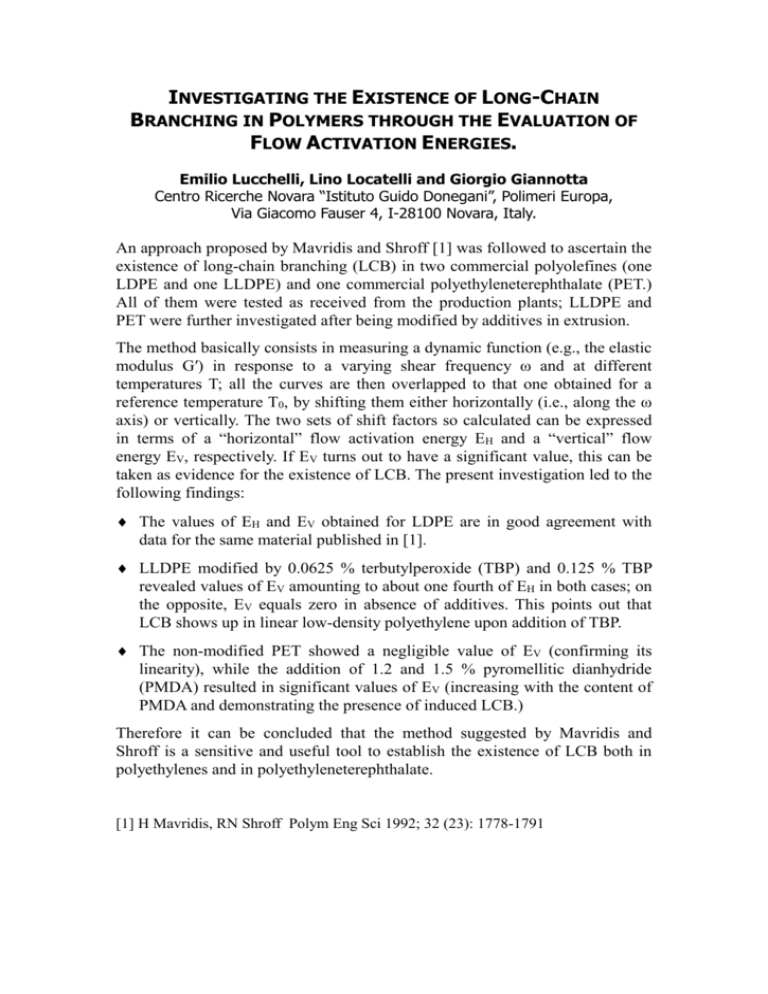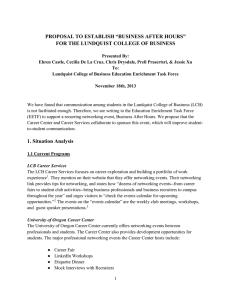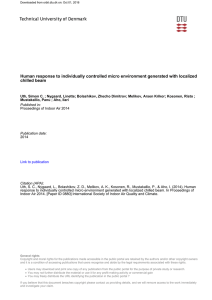Investigating the Existence of Long
advertisement

INVESTIGATING THE EXISTENCE OF LONG-CHAIN BRANCHING IN POLYMERS THROUGH THE EVALUATION OF FLOW ACTIVATION ENERGIES. Emilio Lucchelli, Lino Locatelli and Giorgio Giannotta Centro Ricerche Novara “Istituto Guido Donegani”, Polimeri Europa, Via Giacomo Fauser 4, I-28100 Novara, Italy. An approach proposed by Mavridis and Shroff [1] was followed to ascertain the existence of long-chain branching (LCB) in two commercial polyolefines (one LDPE and one LLDPE) and one commercial polyethyleneterephthalate (PET.) All of them were tested as received from the production plants; LLDPE and PET were further investigated after being modified by additives in extrusion. The method basically consists in measuring a dynamic function (e.g., the elastic modulus G′) in response to a varying shear frequency ω and at different temperatures T; all the curves are then overlapped to that one obtained for a reference temperature T0, by shifting them either horizontally (i.e., along the ω axis) or vertically. The two sets of shift factors so calculated can be expressed in terms of a “horizontal” flow activation energy EH and a “vertical” flow energy EV, respectively. If EV turns out to have a significant value, this can be taken as evidence for the existence of LCB. The present investigation led to the following findings: The values of EH and EV obtained for LDPE are in good agreement with data for the same material published in [1]. LLDPE modified by 0.0625 % terbutylperoxide (TBP) and 0.125 % TBP revealed values of EV amounting to about one fourth of EH in both cases; on the opposite, EV equals zero in absence of additives. This points out that LCB shows up in linear low-density polyethylene upon addition of TBP. The non-modified PET showed a negligible value of EV (confirming its linearity), while the addition of 1.2 and 1.5 % pyromellitic dianhydride (PMDA) resulted in significant values of EV (increasing with the content of PMDA and demonstrating the presence of induced LCB.) Therefore it can be concluded that the method suggested by Mavridis and Shroff is a sensitive and useful tool to establish the existence of LCB both in polyethylenes and in polyethyleneterephthalate. [1] H Mavridis, RN Shroff Polym Eng Sci 1992; 32 (23): 1778-1791











